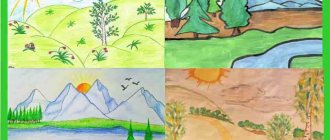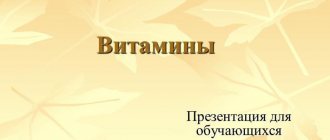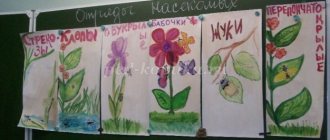Differences from cultivated species
How do wild plants differ from the cultivated ones we are used to? It's simple: most wild plants spread by self-seeding or shoots without any human intervention. All trees, shrubs and herbs that grow, bloom and bear fruit on their own are considered wild in traditional cultural landscapes.
Moreover, over centuries of evolution, some species can thrive in arid desert conditions or in northern regions with severe frosts and long polar nights. Many travelers, hunters and tourists who found themselves in an extreme situation without food were saved by knowledge of local herbs and grains from starvation.
In addition to their benefits, plants found in the fields and steppes of Russia can be harmful: some of them are deadly poisonous, touching others causes a severe burn. Often wild plants are weeds that choke out useful plants, and getting rid of them in gardens and vegetable gardens is quite problematic.
Classification by life forms
All types of wild plants can be divided into several groups , representatives of which differ greatly in size, life expectancy and method of reproduction:
- Trees are long-lived plants consisting of a root system, trunk and crown. They are divided into coniferous and deciduous; under unfavorable conditions they can acquire a low-growing bush form.
- Shrubs characterized by several woody stems without a distinct trunk. They originate at the very surface, from the dormant buds of the main shoot. Height varies from 0.8 to 6 meters depending on the species and conditions.
- Subshrubs are perennial plants in which only the lower parts of the branches become woody; the upper parts usually die off.
- Shrubs that have most of the properties of the previous group, but are smaller in height (up to 0.5 meters).
- Lianas are climbing plants with weak, thin shoots, twining around a vertical support or attached to it with tendrils and additional roots.
- Succulents with fleshy, succulent leaves with a constant supply of water. Found in the flora of the middle zone: juveniles, sedums.
- Herbs are plants with soft green stems. They are divided into annual and perennial. Representatives of the first species grow from a seed in one season and die after fruiting. Perennials live for two years: in the first year, a shoot with a rosette of leaves and a horse is formed from the seed, and in the second, a flowering shoot appears. Some herbs (poppies, violets, barley) can be either annual or perennial.
Most natural species are perfectly adapted to the conditions and area of their existence and quickly get used to temperature changes and aggressive external influences.
Edible wild plants
Many free-growing representatives of the flora can eat all parts, while others can only eat roots, berries or fruits. The variety of edible plants is simply amazing: continuous thickets of wild raspberries or blackberries will delight any child, in the spring you can pick strawberries, and in the fall you can enjoy wild apples. Lovers of good nutrition never tire of harvesting free-growing herbs and plants for future use, because they have a unique taste and aroma.
Herbaceous plants and cereals
In fields and forests there are species rich in carbohydrates, organic acids, vitamins and minerals. The main advantage of these herbs can be considered the ease of collection and the possibility of using them both raw and as part of soups or purees. Among the names of such wild plants, many are familiar from childhood; they often grow near country houses:
- Stinging nettle (Urtica dioica) is a common species, all parts of which are covered with stinging hairs. Nutritionists have found a lot of vitamin C, carotene, and organic acids in its leaves. Vitamin salads are prepared from young leaves, fresh stems are fermented like cabbage, and fragrant tea is made from the inflorescences.
- Dandelion (Taraxacum officinale). A perennial species that settles in the lowlands of rivers, along roads and plantings. All its parts contain a bitter milky juice, so before cooking, the collected dandelions should be soaked in water and salt. Contains a lot of calcium, iron, phosphorus compounds. In some European countries, dandelions are grown as a full-fledged vegetable crop.
- The common horsetail (Equisetum arvense) is found in spruce or mixed forests. Young spring shoots are good as an ingredient in a healthy salad, and the tubers that appear on the rhizomes have a pleasant sweet taste. They can be eaten baked, boiled or even raw.
- It’s hard to imagine, but the root vegetable Burdock (Arctium tomentosum) replaces carrots, parsley and parsnips in taste and nutritional properties.
- Hogweed (Heracleum) has rhizomes, leaves and stems that are edible. This powerful plant can reach 2 meters in height. Prefers to settle on the edges of forests, wastelands, and roadsides. The sweetish rhizome is not inferior in nutritional value and taste to beets, carrots and corn; the peeled stems taste like cucumber. The juice of some species contains furocoumarin, which causes severe burns, so care must be taken when collecting.
- The grains of most cereal crops are edible. They contain substances that can restore energy and maintain the vitality of the body. They are an excellent source of protein and fiber.
The list of edible herbs and grains around us is simply huge; each region of our country grows its own favorite species.
Fruits and berries
In the wild there are many varieties of trees and shrubs with tasty and healthy fruits. Among them are sweet blackberries, currants, raspberries, rowan, sea buckthorn, and bird cherry. In the spring, a rich harvest of strawberries ripens on forest lawns, and cloudberries turn yellow in the swampy lowlands.
The fruits of some types of wild plants have an unusual sour taste. For example, wild apples are significantly more sour than apples grown in an orchard. Wild pears are quite small and may seem inedible, but the jam made from them will be surprisingly aromatic.
Nuts, which can be collected in the forest, are a real storehouse of vegetable protein, fatty acids and minerals. In most regions of the country, hazel, beech nut, pine nut, and cashew are common. In the northern regions, pine nuts are collected, rich in fatty oil, easily digestible proteins and amino acids. Most types of nuts are good to eat raw, but some, like oak acorns, need to be boiled before eating.
The main differences between wild plants and cultivated plants
For the growth and development of plants, certain conditions are necessary. For cultivated species, such conditions are created by humans. He looks for a favorable place for planting plants, feeds them, removes weeds, harvests crops, and protects them from pests and diseases.
Wild plants, the names of which can be found in numerous reference books, do not require special conditions. They themselves adapt to life in the wild.
Benefit for health
Many wild plants simultaneously have not only decorative and nutritional value, but also medicinal properties known since the times of Ancient Rus'. Herbs and shrubs grown in a natural environment are free from nitrates and pesticides, which are oversaturated in greenhouses and fields.
Modern research has shown that in many cases, collections of medicinal herbs can replace pharmaceutical drugs. An example of wild plants that have healing properties are species that are common in every region and familiar from childhood:
- Meadow clover, the flowers and upper leaves of which are used for malaria, headaches and asthma attacks.
- A decoction of burdock roots helps with diseases of the gastrointestinal tract, and fresh leaves are applied to wounds and burns to prevent infections.
- Low-growing oxalis bushes are easy to find in shady places near the banks of rivers and lakes. An infusion of its leaves is used to treat kidney diseases, heartburn and metabolic disorders.
- Lingonberry leaves and berries have strong disinfectant properties. Decoctions and tea are used for vitamin deficiencies, fever, and mineral metabolism disorders.
- A variety of the Aster family, chamomile is found in well-lit meadows and hillocks. Young inflorescences of this familiar plant are used to normalize blood pressure, improve metabolic processes and relieve inflammation. Tea helps with insomnia, depression, and strengthens the nervous system.
— So, the first goal is to learn to compare cultivated and wild plants.The use of medicinal plants, like other drugs, is not always beneficial; everyone has contraindications. It is advisable to consult a doctor who will select the correct dosage regimen based on the characteristics of the body and its condition.
- Look, each pair has a leaf of its own color, now look at the slide. Those guys who have yellow leaves compare plants on a yellow background, those who have green leaves - on a green background, those who have pink leaves - on a pink background. As soon as the couple has finished comparing the plants, they raise their hands. Let's get started.
- So, let's start comparing plants on a yellow background ()
- Okay, let's start comparing plants on a green background ()
— We begin to compare plants on a pink background ()
— We have learned to compare cultivated and wild plants. Now what do we have to do? (Find out what role cultivated and wild plants play in human life). And you will learn this from the text of the textbook. Open the textbook on page 87, reads...
— 1 paragraph (When did people start growing plants?)
— Paragraph 2 (How wild plants ended up near people’s homes)
— Paragraph 3 (What did people do to get a good harvest?)
— Paragraph 4 (What happened to wild plants?)
— 5 paragraph (What industries does crop production include?)
- So how did people learn to grow plants? (They began to sow seeds of wild plants)
— On the same page of the textbook there is question 3. Read it. Who will answer? (People cared for plants, fertilized them, protected them from natural phenomena)
— What is the name of the industry that grows plants? (Crop production)
- Find in the text which sectors modern crop production includes. (Scheme – “Crop production”)
(Field farming - growing field plants, floriculture - growing flowers, fruit growing - growing fruit plants, vegetable growing - growing vegetables). Take the sheets, find diagram No. 2. How many branches does crop farming have? (4) So how many arrows will there be in the diagram? (4) Draw them. Take envelope No. 2, glue the crop growing sectors onto diagram No. 2.
The teacher attaches the branches to the board, and the students to the sheets.
- So, we understand the role of plants in human life.
- Now what do we need to know? (Distinguish between cultivated plants by purpose)
- Let's look at the slide. How to call these plants in one word? (Cereals) What do people use this type of plant for? (For cooking food)
- Let's look at the slide. How to call these plants in one word? (Fruit)
Why do people use this type of plant? (For food)
- Let's look at the slide. How to call these plants in one word? (Vegetables) Why does a person use this type of plant? (For cooking food)
- Let's look at the slide. How to call these plants in one word? (Ornamental) Why does a person use this type of plant? (For beauty)
- Let's look at the slide. What is shown here? Why do people use this type of plant? (To create clothes) How to call these plants in one word? (Spinning)
— How many types of cultivated plants have we listed by purpose? (5)
- Find cultivated plants in diagram No. 1.
— How many shoots will there be from cultivated plants? (5)
— We draw arrows. We take envelope No. 3 and glue the types of cultivated plants according to their intended purpose.
- Now we can distinguish plants by purpose.
- And our last task. What should we do? (Learn to give examples)
— Name examples of cultivated plants.
— Name examples of wild plants.
— We learned to give examples of cultivated and wild plants.
Differences between dangerous plants
Nature has taken care of creating a large number of useful food sources for people and animals. Plants can have a healing effect, serve as a natural energy booster, or have good nutritional properties. But along with healthy fruits and grains, there are species that are hazardous to health, which can often be found even in the nearest garden. A brief description from the table of poisonous plants will become necessary information for anyone who is interested in the properties of plants or likes to walk in the woods .
| Name | Place of distribution | Description | Properties |
| Hemlock spotted | Forest edges, meadows, vegetable gardens | An umbrella plant similar to parsley | Blooming umbrellas are especially dangerous. Causes paralysis of the nervous system, convulsions, loss of consciousness. |
| Henbane black | Abandoned vacant lots, roadsides, vegetable gardens | A member of the Solanaceae family, the stem and leaves are covered with sticky fluff. Has an unpleasant odor | All parts of the plant are poisonous, especially the seeds. Contains potent alkaloids that cause hallucinations, mental disorders, and agitated behavior. |
| Field bindweed | Fields, meadows, vegetable gardens | Herbaceous plant with long thin stems and funnel-shaped flowers | The seeds and flowers contain alkaloids that cause symptoms of poisoning and speech impairment. It is prohibited to feed pets. |
| Aconite | Banks of rivers and lakes, shady wet meadows, roadsides | Belongs to the Ranunculaceae family, a herbaceous plant with a long stem and bright blue or lilac flowers | An extremely poisonous plant that depresses the central nervous system, causing numbness, convulsions, difficulty breathing, and loss of consciousness. |
The visually attractive fruits and berries of crow's eye, belladonna, black crow, and red nightshade are also poisonous. In history, reports of deliberate poisoning with the juice or decoction of plants were not uncommon: the ancient Scythians treated arrowheads with aconite, and the Greek philosopher Socrates drank a drink from hemlock juice.
Among the usual representatives of the flora there are not only dangerous ones, but also wild-growing pest plants, the fight against which often does not produce results. They have a high reproductive capacity, quickly infesting fields and crops.
Interesting fact: scientists have calculated that for every grain of cultivated cereals sown, there are about 200 weed seeds .
There are many plants in nature, many of which have high nutritional, medicinal and decorative value. It is important to learn to distinguish useful herbs and berries from dangerous ones, to know what poisonous plants are called and look like.
Summary of an open lesson on the surrounding world “Cultivated and wild plants”
— So, the first goal is to learn to compare cultivated and wild plants.- Look, each pair has a leaf of its own color, now look at the slide. Those guys who have yellow leaves compare plants on a yellow background, those who have green leaves - on a green background, those who have pink leaves - on a pink background. As soon as the couple has finished comparing the plants, they raise their hands. Let's get started.
- So, let's start comparing plants on a yellow background ()
- Okay, let's start comparing plants on a green background ()
— We begin to compare plants on a pink background ()
— We have learned to compare cultivated and wild plants. Now what do we have to do? (Find out what role cultivated and wild plants play in human life)
. And you will learn this from the text of the textbook. Open the textbook on page 87, reads...
— 1 paragraph (When did people start growing plants?)
— Paragraph 2 (How wild plants ended up near people’s homes)
— Paragraph 3 (What did people do to get a good harvest?)
— Paragraph 4 (What happened to wild plants?)
— 5 paragraph (What industries does crop production include?)
- So how did people learn to grow plants? (They began to sow seeds of wild plants)
— On the same page of the textbook there is question 3. Read it. Who will answer? (People cared for plants, fertilized them, protected them from natural phenomena)
— What is the name of the industry that grows plants? (Crop production)
- Find in the text which sectors modern crop production includes. (Scheme – “Crop production”)
(Field farming
– growing field plants,
floriculture
– growing flowers,
fruit growing
– growing fruit plants,
vegetable growing
– growing vegetables).
Take the sheets, find diagram No. 2. How many branches does crop farming have? (4)
So how many arrows will there be in the diagram?
(4)
Draw them. Take envelope No. 2, glue the crop growing sectors onto diagram No. 2.
The teacher attaches the branches to the board, and the students to the sheets.
- So, we understand the role of plants in human life.
- Now what do we need to know ? (Distinguish between cultivated plants by purpose)
- Let's look at the slide. How to call these plants in one word? (Cereals)
Why do people use this type of plant?
(For cooking)
- Look at the slide. How to call these plants in one word? (Fruit)
Why do people use this type of plant? (For food)
- Let's look at the slide. How to call these plants in one word? (Vegetables)
Why do people use this type of plant?
(For cooking)
- Look at the slide. How to call these plants in one word? (Decorative)
Why do people use this type of plant?
(For beauty)
- Look at the slide. What is shown here? Why do people use this type of plant? (To create clothes)
How to call these plants in one word?
(Spinning)
- How many types of cultivated plants have we listed by purpose? (5)
- Find cultivated plants in diagram No. 1.
— How many shoots will there be from cultivated plants? (5)
— We draw arrows. We take envelope No. 3 and glue the types of cultivated plants according to their intended purpose.
- Now we can distinguish plants by purpose.
- And our last task. What should we do? (Learn to give examples)
— Name examples of cultivated plants.
— Name examples of wild plants.
— We learned to give examples of cultivated and wild plants.







